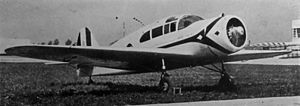The Ambrosini SAI.2 was a light monoplane built in Italy in 1934. Like the SAI.1, it was designed to participate in the Avioraduno del Littorio rally of 1935. Compared with that aircraft, the SAI.2's wing area was only 1.4 m2 (15 ft²) less, but the reduction in drag as a result of the monoplane configuration versus that of a biplane resulted in a top speed 20 km/h (12 mph) higher. Both aircraft used the same engine type.

The Ambrosini SAI.3 was a two-seat Italian touring airplane first flown in 1937. It was a low-wing monoplane with a graceful, elliptical wing, and fixed tailwheel undercarriage. Customers could choose between enclosed or open cockpits, and between an inline Alfa Romeo 115 engine or a radial Fiat A.50. A revised version was marketed as the SAI.3S with a smaller-chord wing and a Siemens-Halske Sh 14 radial engine, this offering far superior performance to the original SAI.3 design.

The Ambrosini SAI.10 Grifone ("Griffon") was a military trainer aircraft produced in small numbers for the Italian Regia Aeronautica early in World War II. With the approach of war, the Ministero dell' Aeronautica began a programme to increase the number of pilots available, and ordered a prototype primary trainer from Ambrosini. This aircraft, a parasol monoplane of mixed construction, first flew on July 8, 1939, with Guiliano Ferrari at the controls. A production batch of 50 was ordered, but this was quickly reduced to just 10 machines, all of which were delivered in 1940.

The Bellanca 31-40 Senior Pacemaker and its derivatives were a family of a six- and eight-seat utility aircraft built in the United States in the late 1930s. They were the final revision of the original late 1920s Wright-Bellanca WB-2 design. The model numbers used by Bellanca in this period reflected the wing area and engine horsepower, each divided by ten. Like their predecessors, these were high-wing braced monoplanes with conventional tailwheel undercarriage.
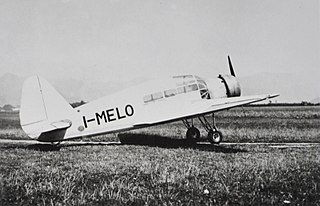
The Caproni PS.1, also known as the Pallavicino PS-1 and Caproni Ca.303, was an Italian four-seater sportsplane, designed and built specifically to compete in Challenge 1934, the European touring plane championships.

The IMAM Ro.51 was an Italian fighter aircraft that first flew in 1937. It was designed for the 1936 new fighter contest for the Regia Aeronautica, with practically all the Italian aircraft builders involved.

The IMAM Ro.57 was an Italian twin-engined, single-seat monoplane fighter of the Regia Aeronautica. Based on a 1939 design by Giovanni Galasso the aircraft did not enter production until 1943.

The Piaggio P.150 was a 1950s Italian two-seat trainer designed and built by Piaggio to meet an Italian Air Force requirement to replace the North American T-6.
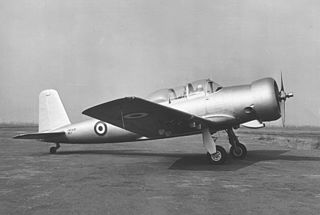
The Fiat G.49 was an Italian two-seat basic trainer designed by Giuseppe Gabrielli and built by Fiat.

The Nardi FN.305 was an Italian fighter trainer and liaison monoplane developed by the Fratelli Nardi company.

The Nardi FN.315 was an Italian training monoplane developed from the earlier Nardi FN.305 and produced by the Fratelli Nardi company.

The Fiat AS.1 was a light touring aircraft developed in Italy in the late 1920s.
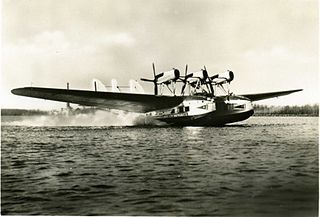
The Savoia-Marchetti S.66 was a 1930s Italian twin-hull flying boat designed and built by Savoia-Marchetti as an enlarged development of the S.55.

The Macchi MB.323 was an Italian single-engine basic training monoplane designed and built by Macchi. No orders were placed and only a prototype was built.

The Peyret-Mauboussin PM XI was a French high-wing touring aircraft of the early 1930s.
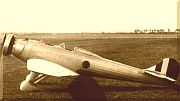
The Fiat G.5 was an Italian two-seat aerobatic tourer or trainer designed and built by Fiat Aviazione in small numbers.

The Letov Š-50 was a 1930s prototype Czechoslovakian military general-purpose monoplane, designed and built by Letov.

The Magni Vale PM-3-4 was an Italian civil monoplane for use as a tourer or aerobatic trainer designed and built by Piero Magni-Aviazione in Milan.

The Savoia-Marchetti SM.80 was a two-seat monoplane amphibian tourer, with a single, tractor engine mounted above the wing, designed in Italy in the early 1930s. The SM.80bis was a four-seat variant, powered by two pusher engines.
The Caproni Ca.131 was a prototype for a large aircraft built in Italy in 1934, intended for use as either a bomber or airliner. It was a conventional low-wing cantilever monoplane, powered by a radial engine on each wing and in the nose. The main undercarriage was housed within large streamlined spats. Configured as an airliner, it would have seated 17 passengers.
